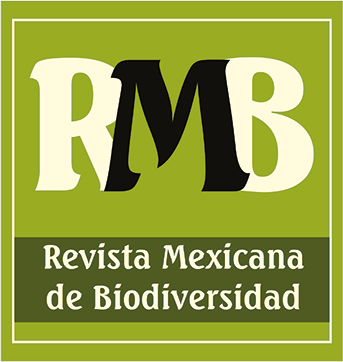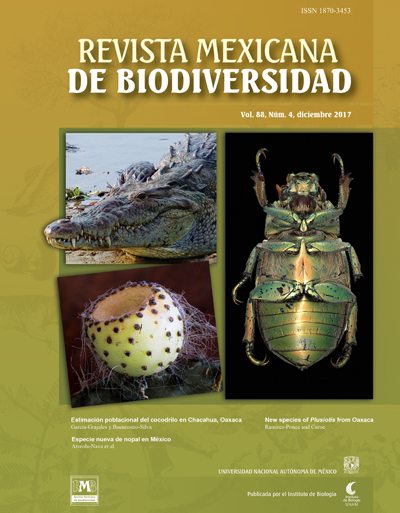They can dig it: semifossorial habits of the Mexican small-eared shrew (Mammalia: Cryptotis mexicanus)
DOI:
https://doi.org/10.1016/j.rmb.2017.10.012Palabras clave:
Behavior, Cryptotis, Digging, Eulipotyphla, InsectivoraResumen
Some small-eared shrews, genus Cryptotis, display modifications of the forelimb that have been interpreted as an adaptation for burrowing. As
most of the species in the genus inhabit areas with poor accessibility and it is difficult to obtain direct observations in the wild, digging behavior
remains unknown. This short note presents observational data under semi-natural conditions for the Mexican small-eared shrew that support the
hypothesis of semifossoriality related to the functional morphology of its forelimb. These findings can provide clues about the assembly of shrew
communities, particularly regarding foraging modes and niche partitioning.




